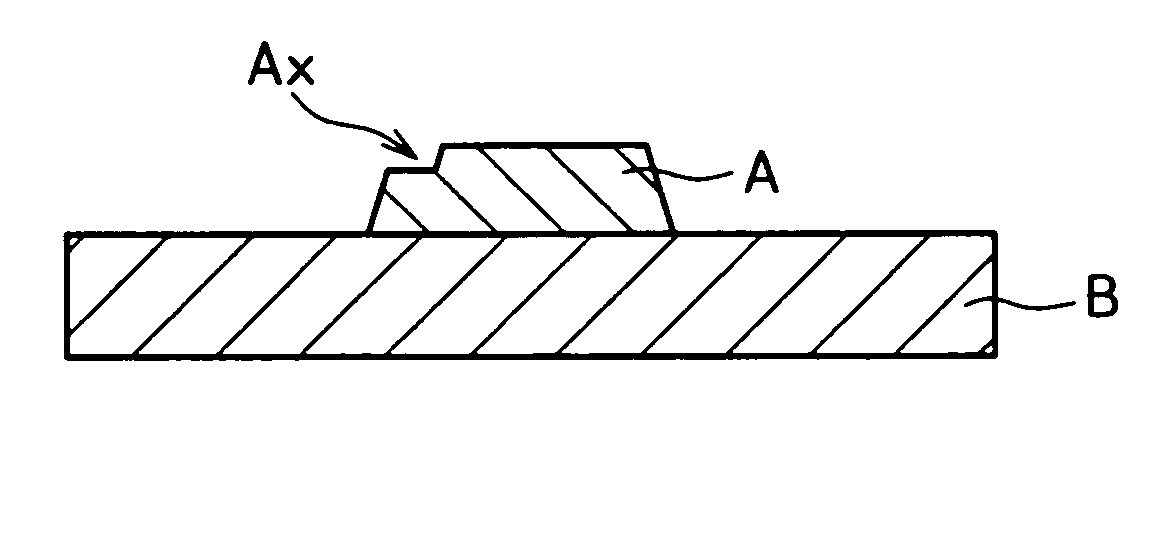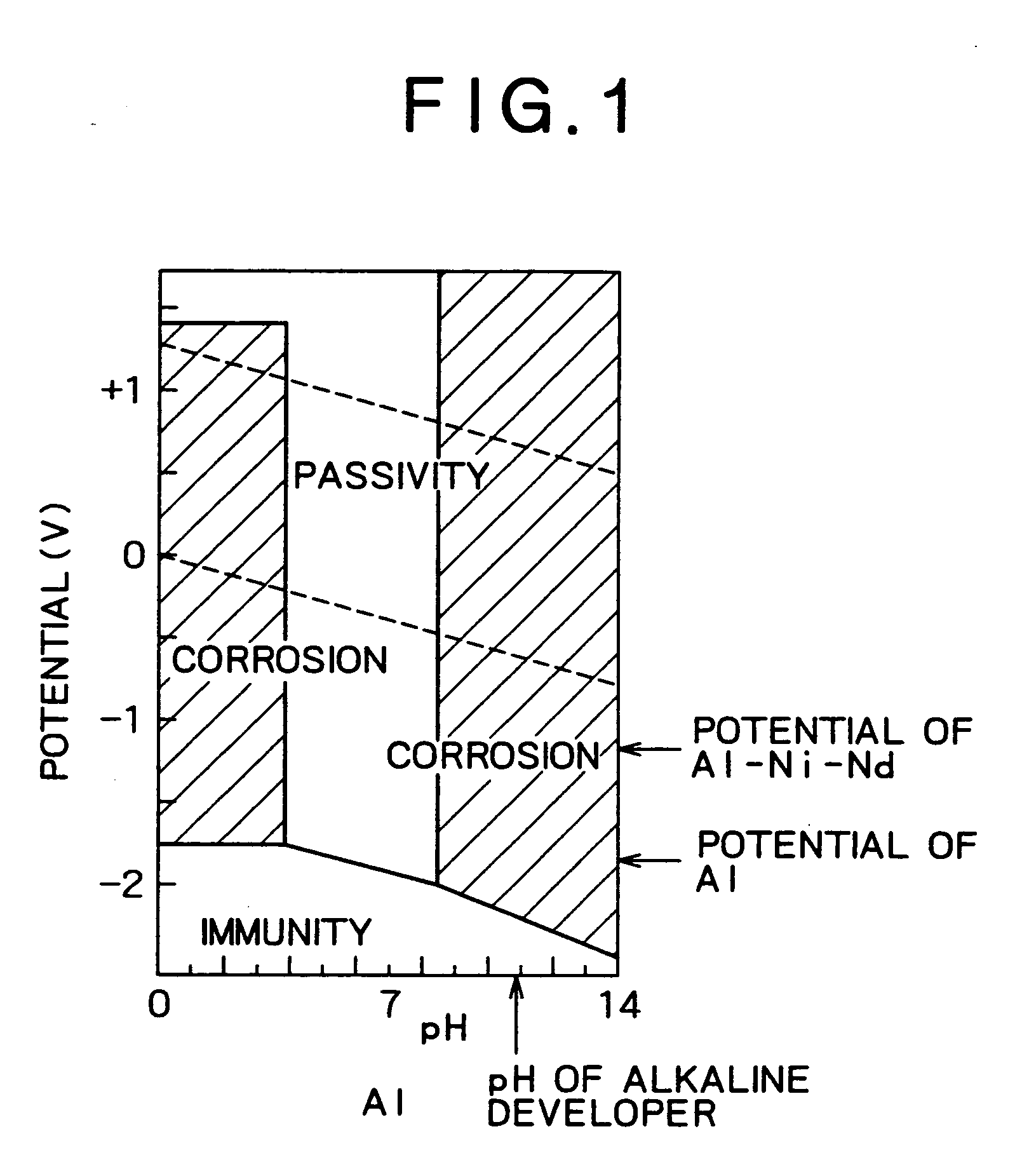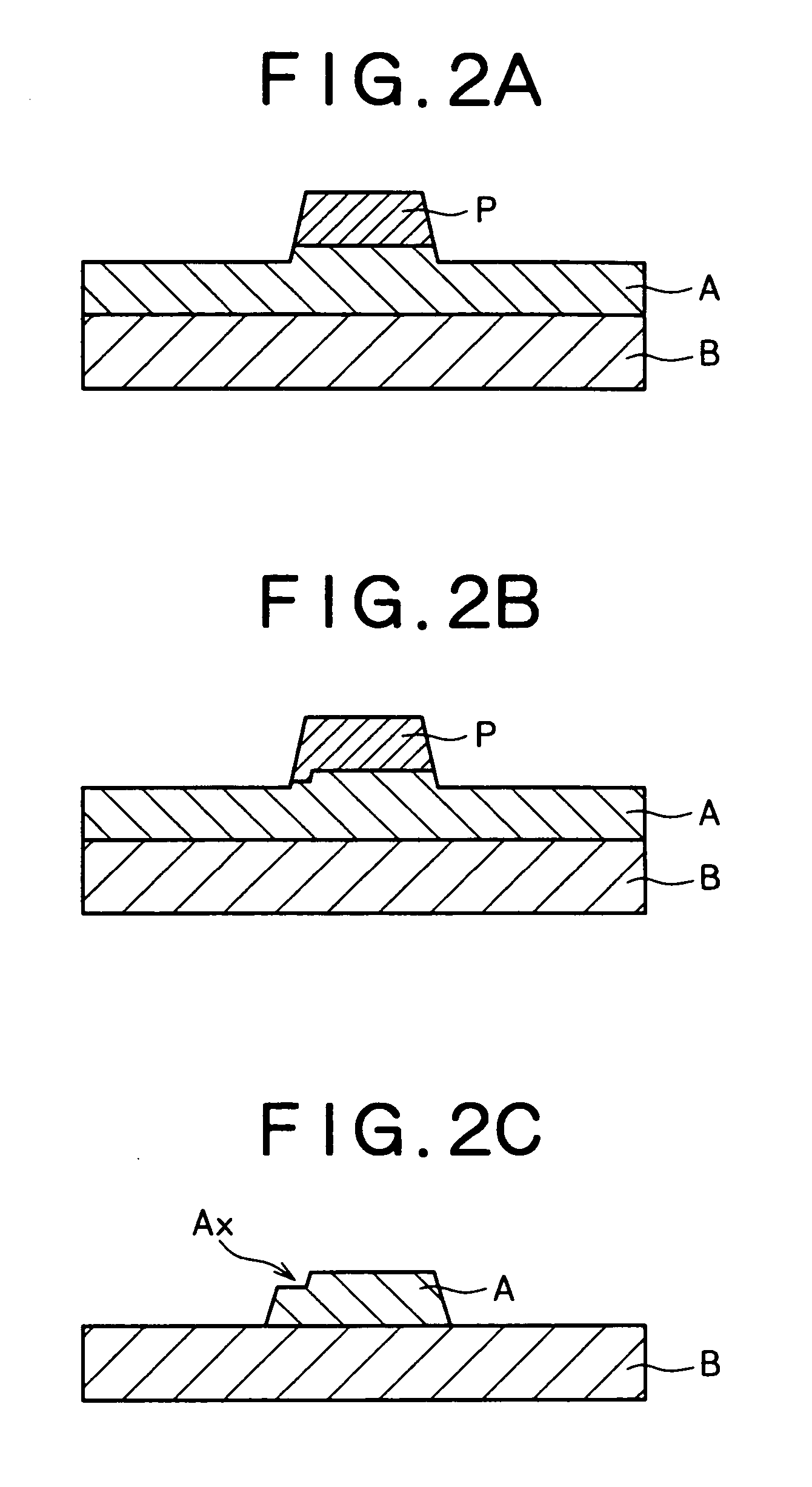Display device
a display device and thin technology, applied in static indicating devices, instruments, sport apparatuses, etc., can solve the problems of inability to allow an alloy mainly containing aluminum to have such a high potential, inherently not so resistant to pure aluminum, and significant galvanic corrosion caused by local cell phenomenon, etc., to achieve reliably high-quality display devices, easy and precise patterning
- Summary
- Abstract
- Description
- Claims
- Application Information
AI Technical Summary
Benefits of technology
Problems solved by technology
Method used
Image
Examples
examples
[0116] The present invention will be illustrated in further detail with reference to several examples below, which are not intended to limit the scope of the present invention.
[0117] The contact resistance in direct contact between aluminum alloy wirings and the pixel electrode 5 on the array substrate according to the present invention was determined. The results are shown in Table 1.
[0118] The determination was carried out in the following manner.
[0119] 1) Configuration of the pixel electrode: Indium tin oxide (ITO) comprising indium oxide and 10 percent by weight of tin oxide and having a thickness of 200 nm, or indium zinc oxide (IZO) comprising indium oxide and 10 percent by weight of zinc oxide and having a thickness of 200 nm
[0120] 2) Configuration of the aluminum alloy film: The contents of the alloy components are shown in Table 1.
[0121] 3) Conditions for heat treatment: A dielectric film (SiNx) was formed to a thickness of 300 nm, and the work was subjected to heat tr...
examples 1 and 2
[0126] A silicon wafer bearing an oxide film (SiO2 thermally grown oxide film) 400 nm on its surface for establishing insulation of the substrate was used instead of the glass substrate. A nitrogen-free aluminum alloy film 300 nm thick was formed on the silicon wafer, a nitrogen-containing aluminum alloy film 30 nm thick was formed thereon to form a multilayer aluminum alloy film, the multilayer aluminum alloy film was patterned, and a dielectric film (SiNx) 300 nm thick was formed by chemical vapor deposition (CVD). The work was as intact subjected to heat treatment in a vacuum film-forming chamber for one hour and was taken out. A 80-μm square contact hole was patterned by photolithography, followed by etching with fluorine-containing plasma to thereby form a contact hole. In this procedure, overetching about 100% in terms of time was carried out in addition to the etching of the dielectric film. This treatment removed about 35 nm thick (about 11% of the film thickness) of the sur...
example 1
yer film comprising a nitrogen-containing Al-2 at % Ni-0.6 at % Nd and a nitrogen-free Al-2 at % Ni-0.6 at % Nd
PUM
| Property | Measurement | Unit |
|---|---|---|
| thickness | aaaaa | aaaaa |
| standard electric potential | aaaaa | aaaaa |
| standard electric potential | aaaaa | aaaaa |
Abstract
Description
Claims
Application Information
 Login to View More
Login to View More - R&D
- Intellectual Property
- Life Sciences
- Materials
- Tech Scout
- Unparalleled Data Quality
- Higher Quality Content
- 60% Fewer Hallucinations
Browse by: Latest US Patents, China's latest patents, Technical Efficacy Thesaurus, Application Domain, Technology Topic, Popular Technical Reports.
© 2025 PatSnap. All rights reserved.Legal|Privacy policy|Modern Slavery Act Transparency Statement|Sitemap|About US| Contact US: help@patsnap.com



